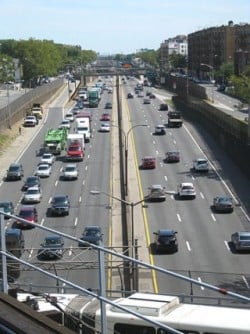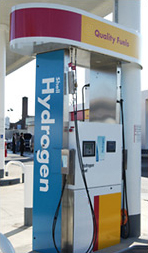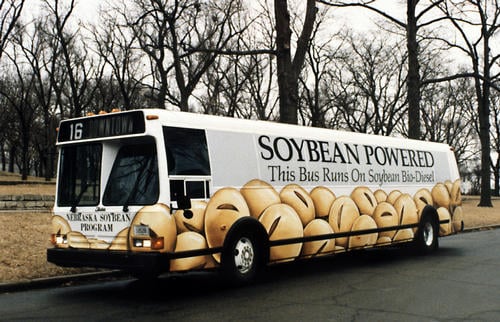In America, driving is all the rage, apparently.
And just how much driving are Americans doing? In the March 13, 2017 Air Quality Matters post “In U.S. in 2016, 3.2 trillion miles driven: Air, roads, feeling the heat” I took a look at some important numbers.

It was further emphasized that in December 2016 alone and based on Federal Highway Administration (FHWA) data, logged that month was an estimated 263.6 billion miles, up a half a percent over that which was driven during the same month the previous year.
Meanwhile, in California …
“ … ‘At 33.9 billion VMT [vehicle miles traveled], California accounted for more miles driven in December 2016 than the combined 33.8 billion miles of 22 states – Alaska, Arkansas, Connecticut, Delaware, Hawaii, Idaho, Iowa, Kansas, Maine, Mississippi, Montana, Nebraska, Nevada, New Hampshire, New Mexico, North Dakota, Rhode Island, South Dakota, Utah, Vermont, West Virginia, Wyoming – and Washington, D.C,’ the FHWA emphasized.” As Americans, we do our fair share of driving, plain and simple.
With all that driving come negative consequences. Air pollution, accidents, congestion and delay among them.
The Texas A&M University Transportation Institute and INRIX in an Aug. 26, 2015 press release state: “Washington, D.C. tops the list of gridlock-plagued cities, with 82 hours of delay per commuter, followed by Los Angeles (80 hours), San Francisco (78 hours), New York (74 hours), and San Jose (67 hours).”
As to how to properly address that delay, there is much debate. While there are those who disagree, building more roadway miles isn’t the answer. Time and time again it is proven that this so-called remedy just induces (encourages) motorists to drive more – an “if-you-build-it-they-will-come” law, principle, rule if you will. This phenomenon goes by the name “induced demand.”
Related to this, TTI and INRIX further noted in the 2015 Urban Mobility Scorecard (as reported on in the same release) that an extra seven billion hours were spent by motorists on America’s roadways stuck in traffic, for an average 42 hours per driver. The seven billion additional hours cost automobilists $160 billion or $960 for each commuter and consumed over “three billion gallons of fuel.”
It’s wasted fuel literally gone up in smoke.
It is exactly with this in mind that California (and joined by several other states as well) is totally on board when it comes to embracing programs and practices with the aim of lowering automotive sector emissions. That’s important because without this motivation, energy, materialization, pollution from transportation would be far worse a problem.
With an eye on the future
It is a goal in California to put 1.5 million zero-emissions motor vehicles on state roads by 2025. Though noble, the number represents but five percent of the approximately 30 million registered vehicles in the Golden State today.
As it pertains to this, Tesla Motors – manufacturer of zero-emissions battery electric vehicles – is California-based and employs 10,000 workers at its Fremont site. Meanwhile, coming to the central San Joaquin Valley south of Hanford is another electric automaker: Faraday Future, these two endeavors highly indicative that change is upon us and becoming the order of the day.
Not just this, but finding other viable ways to further reduce transportation-sourced emissions is paramount if there is to be marked and measurable reductions made.

Now, looking at some specific statistics and using Google’s Public Data provision, travel per U.S. driver in 2013 was 14,085.25 miles. Additionally, using data from this same source, U.S. drivers in 2013 numbered 212.1597 million and 2.99 trillion represents the total number of miles driven on American roadways in 2013.
Meanwhile, per-vehicle fuel consumption, according to the same source for the same year, totaled 663.02 gallons.
Combined gasoline and diesel fuel consumed in all in year 2013 is 131 billion and 38.3523 billion, respectively, for a total 169.3253 billion gallons.
Using the figures above of 2.99 trillion vehicle miles traveled and total fuel consumption being 169.3253 billion gallons, what this works out to, is an average vehicle fuel mileage rating for all vehicles all throughout the U.S. of 17.655 miles per gallon.
Remember, this is in year 2013. However, should the numbers improve over time, the expectation is that air quality would likewise improve. On the other hand, the reverse could be true if the number driving and/or the number of miles driven increases. So, we’ll just have to keep a close watch on conditions as they develop.
– Alan Kandel
